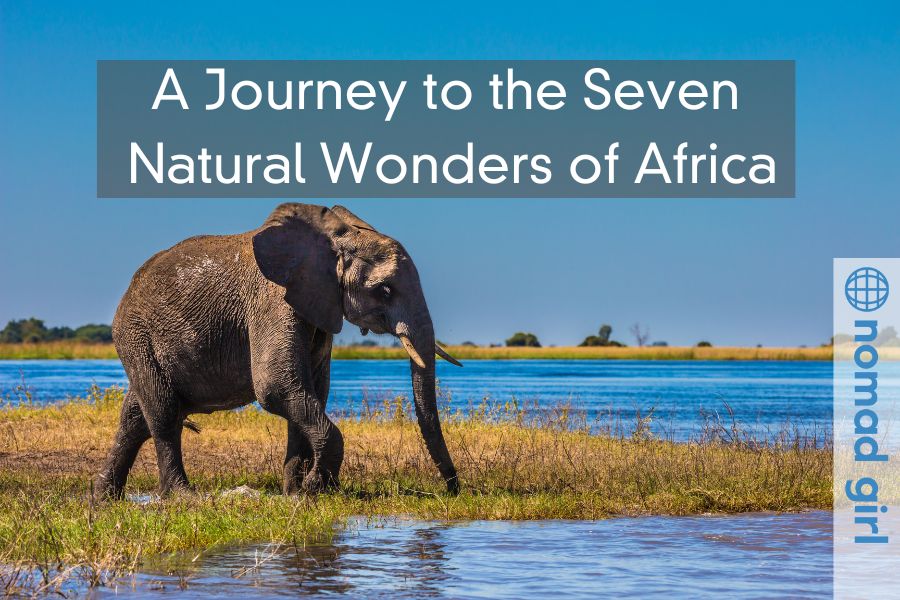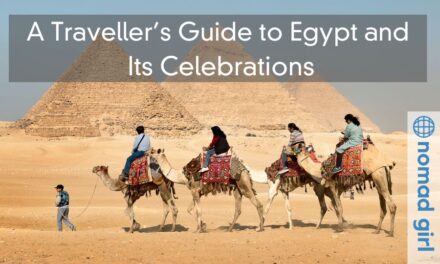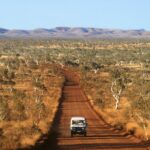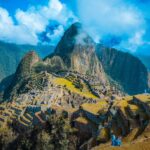Africa, a continent of awe-inspiring landscapes and diverse ecosystems, is home to some of the world’s natural wonders. In this article, we take you to the seven natural wonders of Africa.
Join us on an expedition as we explore dramatic, incredible terrains, from cascading waterfalls to towering peaks. Each of these wonders has a history and cultural significance that make them must-sees on your trip to this spectacular continent.
1. Okavango Delta, Botswana
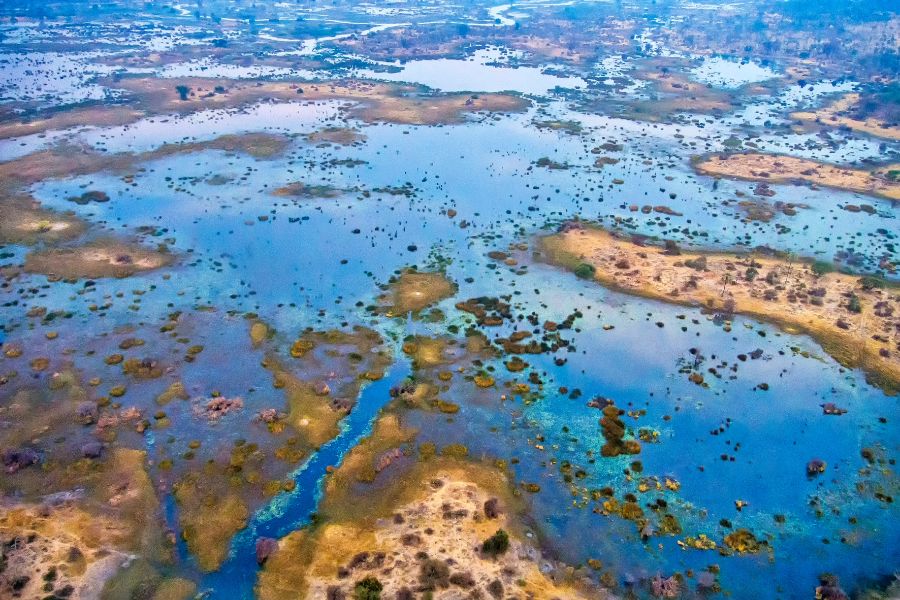
The Okavango Delta in Botswana is a mesmerizing natural wonder, renowned for its sprawling, lush waterways and abundant wildlife. This vast inland delta, one of the largest in the world, is unique due to its peculiar formation: unlike most, it doesn’t flow into a sea or ocean but instead disperses into the arid Kalahari Desert, creating a unique and vibrant ecosystem.
This geographical marvel is a sanctuary for an incredible array of animals. It is especially famous for its large elephant populations, majestic African buffalo, and prowling predators like lions and cheetahs. Birdwatchers are also in for a treat, with the delta being a haven for numerous bird species.
Designated as a UNESCO World Heritage Site status reveals its significance, the Okavango Delta’s global importance as a biodiversity hotspot is recognized and protected. This status underscores its ecological significance, not just for the wildlife that thrives within its waters and islands, but also for the delicate balance it maintains in an otherwise harsh environment.
To truly immerse in the beauty and wildlife of the Okavango Delta, it is advisable for tourists to visit during the dry season, which spans from June to October. During this period, the floodwaters from Angola reach the delta, attracting animals from miles around and offering spectacular wildlife viewing opportunities.
The lower vegetation also improves visibility for wildlife sightings. Whether exploring by traditional mokoro canoes, guided bush walks, or safari drives, the Okavango Delta promises an unforgettable experience, blending adventure with the serene beauty of an untouched natural paradise.
2. Victoria Falls, Zambia/ Zimbabwe border
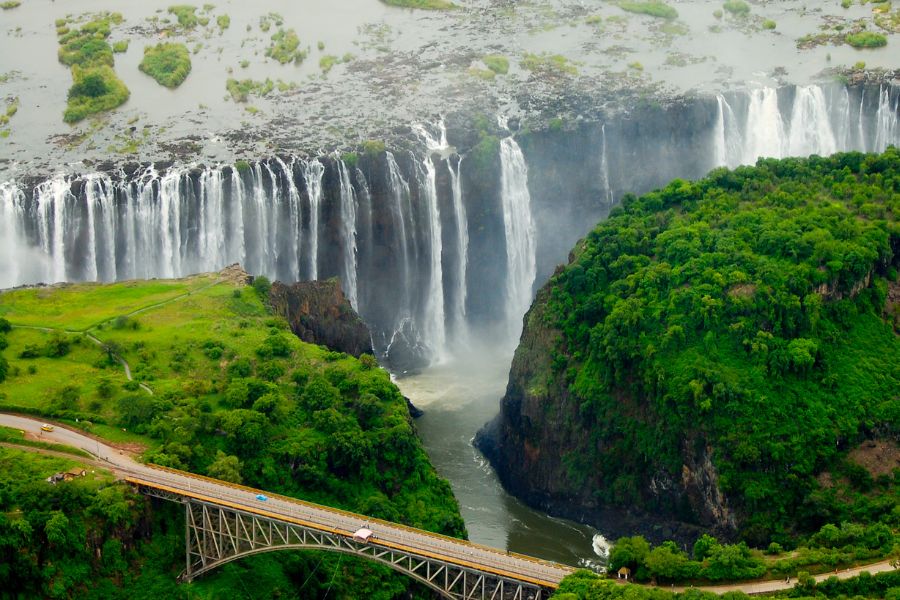
Victoria Falls, majestically positioned on the border between Zambia and Zimbabwe, is a natural spectacle of awe-inspiring beauty and grandeur.
Known locally as ‘Mosi-oa-Tunya’ or ‘The Smoke that Thunders,’ this UNESCO World Heritage Site that straddles the border, is one of the largest and most captivating waterfalls in the world. The sheer volume of water cascading over the cliffs creates a thunderous roar and a mist that can be seen from miles away, justifying its evocative local name.
The falls are not just a visual marvel; they are steeped in rich cultural and spiritual significance. Local myths and legends imbue the falls with a sense of mystique, considering it a place of great spiritual power. This reverence reflects the deep connection between the local communities and their natural environment, adding a profound depth to the visitor experience.
The surrounding rainforest, nourished by the continuous spray from the falls, is a biodiversity hotspot. It hosts an array of unique flora and fauna, creating a lush, vibrant ecosystem. This area is a paradise for nature enthusiasts and scientists alike, offering a chance to observe rare plant species and wildlife in their natural habitat.
For the optimal experience, SAFARI FRANK recommends the dry season as the best time to visit Zambia, from May to October, when wildlife congregates around water sources, making for prime game viewing opportunities.
For those seeking to witness the raw power of nature, Victoria Falls is a spectacular display. The Zambezi River, which feeds the falls, dramatically plunges into a chasm, creating a breathtaking spectacle. The misty spray, rising high into the air, creates rainbows that add to the enchantment of the place.
Visitors to Victoria Falls can explore this natural wonder from various vantage points, each offering a unique perspective. The falls can be viewed from both the Zambian and Zimbabwean sides, with each providing different yet equally mesmerizing views.
Activities like bungee jumping, white-water rafting, and helicopter tours offer adrenaline-pumping ways to experience the falls, while tranquil boat cruises on the Zambezi River provide a more relaxed way to appreciate the area’s serene beauty.
In essence, Victoria Falls is not just a natural wonder but a cultural and spiritual symbol, a hub of biodiversity, and a testament to the sublime power of nature. It remains one of the most extraordinary and unforgettable natural sights in the world.
3. Mount Kilimanjaro, Tanzania
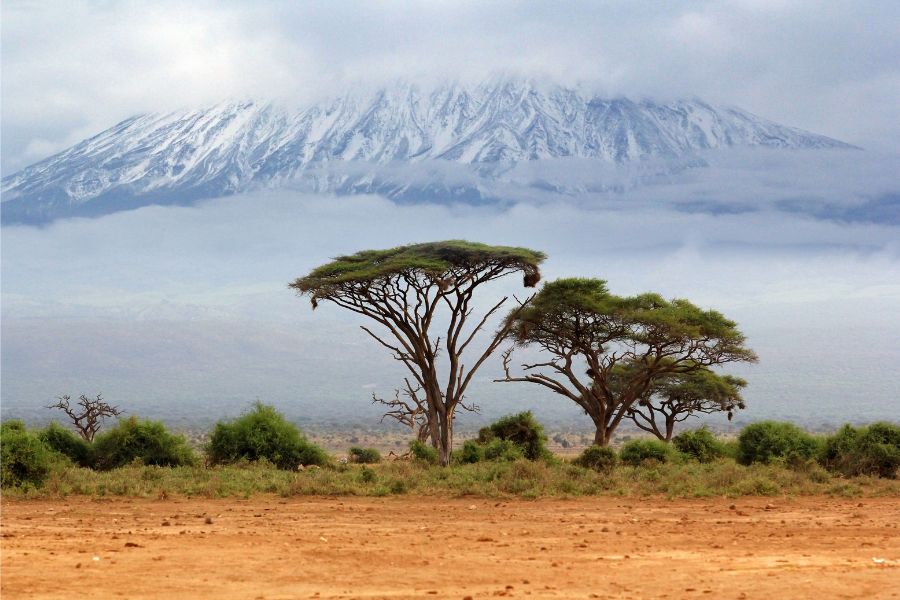
Mount Kilimanjaro, the towering giant of Africa, stands as a majestic beacon in Tanzania. It is not just the highest peak in Africa but also the tallest free-standing mountain in the world, reaching an impressive altitude of 5,895 meters (19,341 feet) above sea level.
Its commanding presence is a beckoning challenge to adventurers and mountaineers worldwide, making it an essential stop for for any adventurers taking a luxury safari tour in Africa.
Climbing Kilimanjaro is a dream for many, yet it requires more than just a keen spirit. The mountain’s terrain is varied and challenging, demanding a good level of fitness and mountaineering experience.
Despite this, it remains one of the most popular hiking destinations globally, attracting thousands of climbers every year. Its popularity stems not just from the challenge it presents but also from the incredible natural beauty and diverse ecosystems found on its slopes.
As climbers ascend Kilimanjaro, they traverse through multiple ecological zones. The journey begins in lush rainforests, home to diverse wildlife and exotic flora. As one climbs higher, the landscape transforms dramatically, passing through alpine meadows and barren lunar-like highland deserts.
Near the summit, the sight of glaciers and ice cliffs in this equatorial region is both surreal and awe-inspiring. This variety of ecosystems makes the trek up Kilimanjaro as visually stunning as it is physically challenging.
The summit, Uhuru Peak, offers a reward that goes beyond the breathtaking panoramic views. Reaching the top provides a profound sense of accomplishment, standing at the roof of Africa, where one can literally touch the clouds.
This journey through varying climates, coupled with the physical and mental challenge of the climb, makes ascending Mount Kilimanjaro an unforgettable, once-in-a-lifetime experience. For many, it is not just a physical journey but a spiritual one, offering a unique perspective on the natural world and its place within it.
4. Serengeti Migration, Tanzania
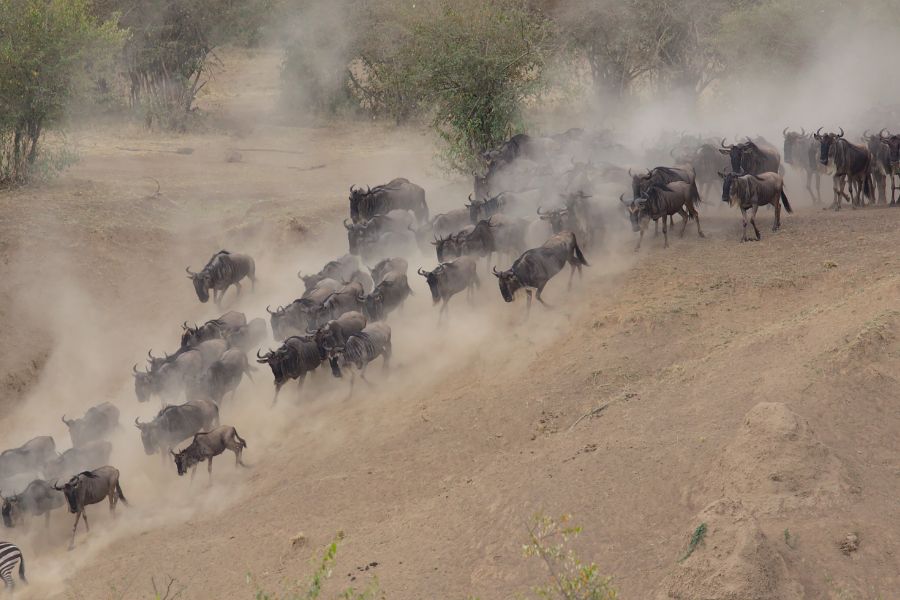
The Great Migration in the Serengeti, Tanzania, is an awe-inspiring natural phenomenon, unparalleled in its sheer scale and drama. Each year, over two million wildebeest, accompanied by zebras and gazelles, embark on a monumental journey across the vast plains of the Serengeti.
This cyclical pilgrimage, driven by the search for fresh grazing and water, presents a breathtaking spectacle of survival and endurance.
As these herds traverse the Serengeti, they face numerous challenges, from navigating treacherous river crossings teeming with crocodiles to evading predators like lions, cheetahs, and hyenas.
This migration is not just a movement of animals; it’s a dynamic, ever-evolving interaction between the land and its inhabitants. The journey profoundly impacts the ecosystem, shaping the lives of both the migratory species and the predators that rely on them for sustenance.
Witnessing the Great Migration offers a unique insight into the complexities of the natural world. It’s an opportunity to observe firsthand the interdependence of species and the impact of environmental factors on animal behaviour.
The Serengeti becomes a grand stage where the drama of life, survival, and natural selection unfolds in its most raw and vivid form.
5. Ngorongoro Crater, Tanzania
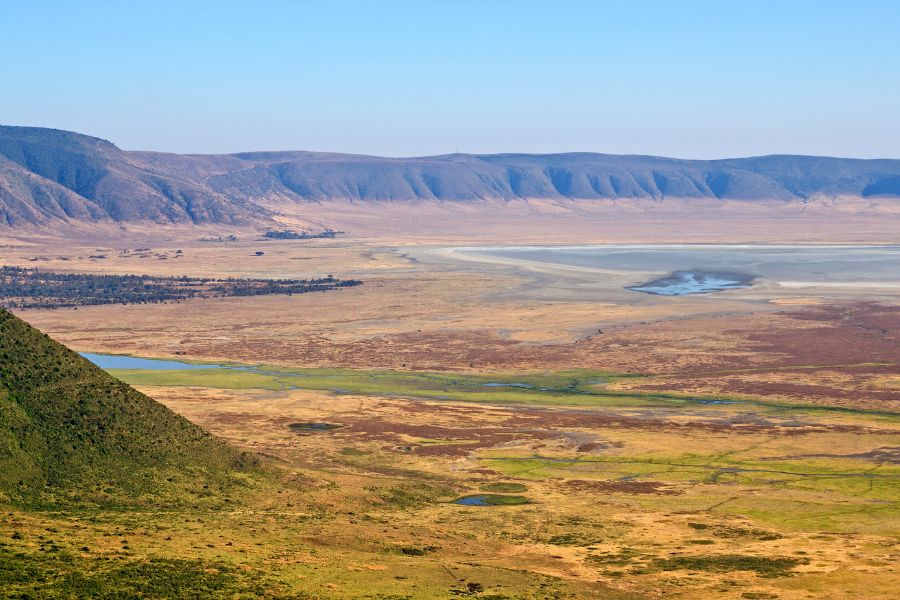
The Ngorongoro Crater, located within the Ngorongoro Conservation Area in Tanzania is a remarkable natural wonder, a testament to the planet’s ancient geological history. Formed when a massive volcano exploded and collapsed on itself two to three million years ago, this ancient caldera is now a unique and self-contained ecosystem.
Spanning nearly 100 square miles and reaching depths of almost 2,000 feet, the Ngorongoro Crater is a microcosm of African wildlife, making it a highlight of any African tour.
This vast, natural amphitheatre teems with an incredible diversity of wildlife. It is one of the few places in Africa where you can witness the entire Big Five (lion, elephant, buffalo, rhinoceros, and leopard) in one location.
The crater floor, predominantly open grassland with a central soda lake, offers ideal game-viewing opportunities. The high walls of the caldera create a natural enclosure for this rich ecosystem, leading to high concentrations of wildlife.
Apart from the Big Five, the crater is home to numerous other species, all coexisting within this confined space. This includes herds of wildebeest, zebra, gazelles, and some of Tanzania’s last remaining black rhinos. The crater also boasts a large population of predators, including lions, hyenas, and cheetahs, ensuring a natural and dynamic balance between predator and prey.
The Ngorongoro Crater is not just about animal sightings; it’s an ecological haven that provides insights into the complex interactions within an ecosystem. It is a place where the beauty and harsh realities of the natural world can be observed nearby.
6. The Nile River, Egypt
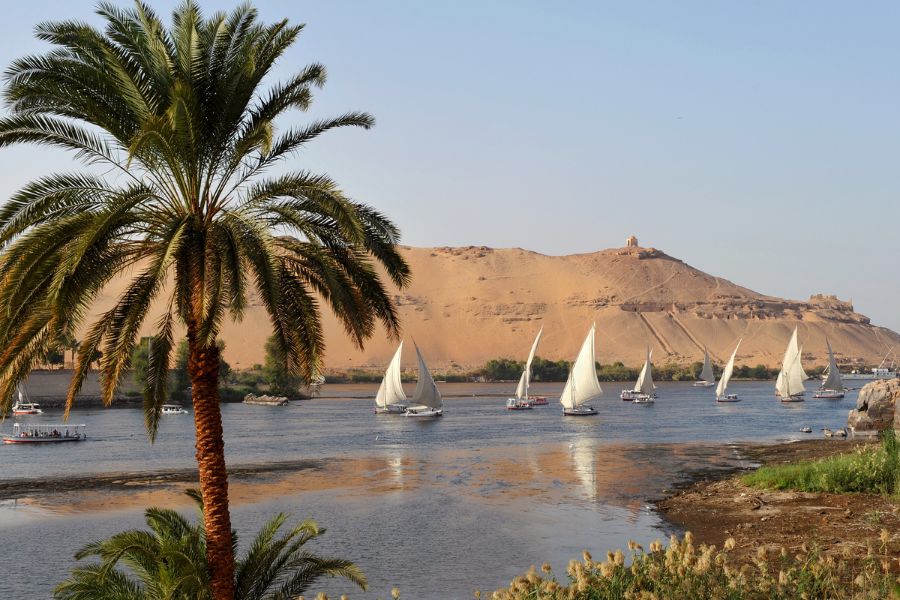
The Nile River, an enduring symbol of life and history, is not just a geographical marvel but also a central artery that has shaped the destiny of civilizations. Stretching an impressive 4,132 miles, it holds the title of the longest river in Africa, and one of the longest in the world.
This mighty river meanders through Egypt, its waters playing a pivotal role in the country’s existence, but its influence extends far beyond, touching the borders of ten other African countries.
For millennia, the Nile has been the lifeblood of numerous ancient civilizations. Its fertile banks saw the rise and prosperity of the Egyptian civilization, fostering a rich cultural and architectural heritage symbolized by the majestic pyramids, temples, and monuments that line its course.
The river’s annual floods deposited nutrient-rich silt along its banks, enabling the development of agriculture and supporting dense populations since ancient times.
Today, the Nile’s significance remains undiminished for Egypt. It is a vital waterway, essential for the country’s agriculture, industry, and daily life. The river’s waters are a precious resource in a region characterized by arid climates, supporting the livelihoods of millions of Egyptians.
The Nile also plays a key role in the nation’s transportation and tourism, offering scenic river cruises that provide a unique perspective on Egypt’s historical sites and modern cities.
Beyond its practical importance, the Nile River holds a deep cultural and spiritual significance for Egyptians and all who dwell along its vast course.
It is entwined with the identity and history of the region, a constant presence in the collective memory and folklore of the people. As a source of sustenance, a means of transport, and a witness to history, the Nile continues to be an enduring symbol of life, resilience, and continuity in Africa.
Its waters tell a story of past glories, present challenges, and future hopes, making it a must-visit for anyone seeking to understand the heart and soul of this diverse and dynamic continent.
7. The Sahara Desert, North Africa
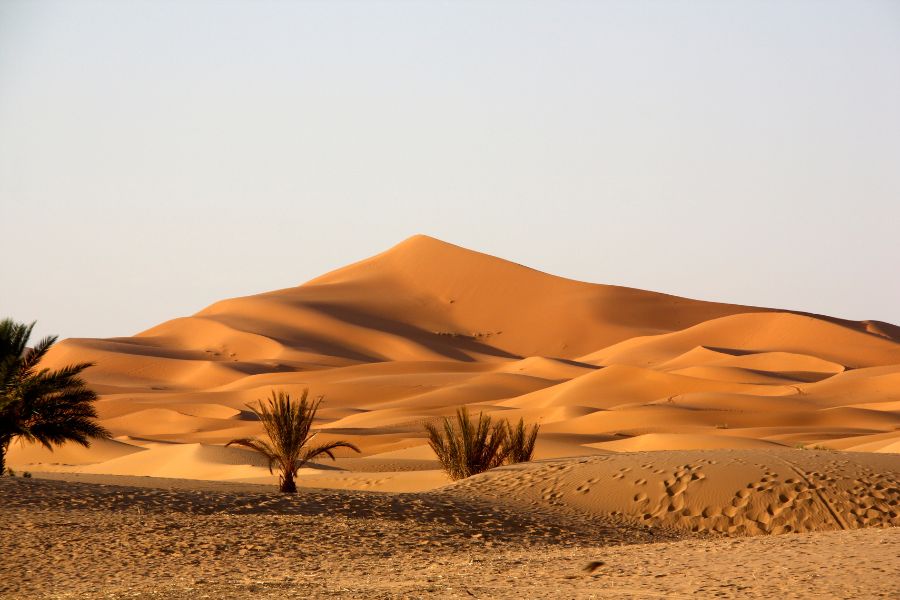
Embark on a journey into the Sahara Desert, the largest hot desert on our planet, extending over an astonishing 3,600,000 square miles across North Africa. This vast, sun-baked landscape is more than just an expanse of sand; it’s a place of stark beauty and surprising diversity, offering unique experiences for the intrepid traveler.
Despite its reputation for extreme conditions, with scorching days and freezing nights, parts of the Sahara are accessible and offer a glimpse into a world of unparalleled natural wonders.
The desert is famous for its iconic sand dunes, which can reach heights of up to 600 feet, creating a surreal, ever-changing landscape of light and shadow. These dunes provide some of the most stunning visual spectacles, especially during sunrise or sunset when the desert sky lights up in vibrant colours.
The Sahara is not just a barren wasteland; it’s punctuated with ancient oases, where life clings to existence around life-giving water sources. These green, lush spots in the middle of the desert are a testament to the resilience of life.
Visitors can explore these areas and discover the unique flora and fauna that have adapted to thrive in such an arid environment. The desert is home to various species, including camels, foxes, and an array of reptiles and birds, each uniquely suited to the desert’s harsh conditions.
Travelling by camel, visitors can immerse themselves in the traditional way of life of the desert nomads, experiencing the timeless beauty of the Sahara. The slow pace of camel travel allows for a deeper appreciation of the desert’s vastness and serenity.
As night falls, the desert sky reveals another of its wonders – an unobstructed view of the stars, offering some of the most magnificent stargazing opportunities on the planet.
Africa is home to some mesmerising sights. Where will you visit on your tour?


